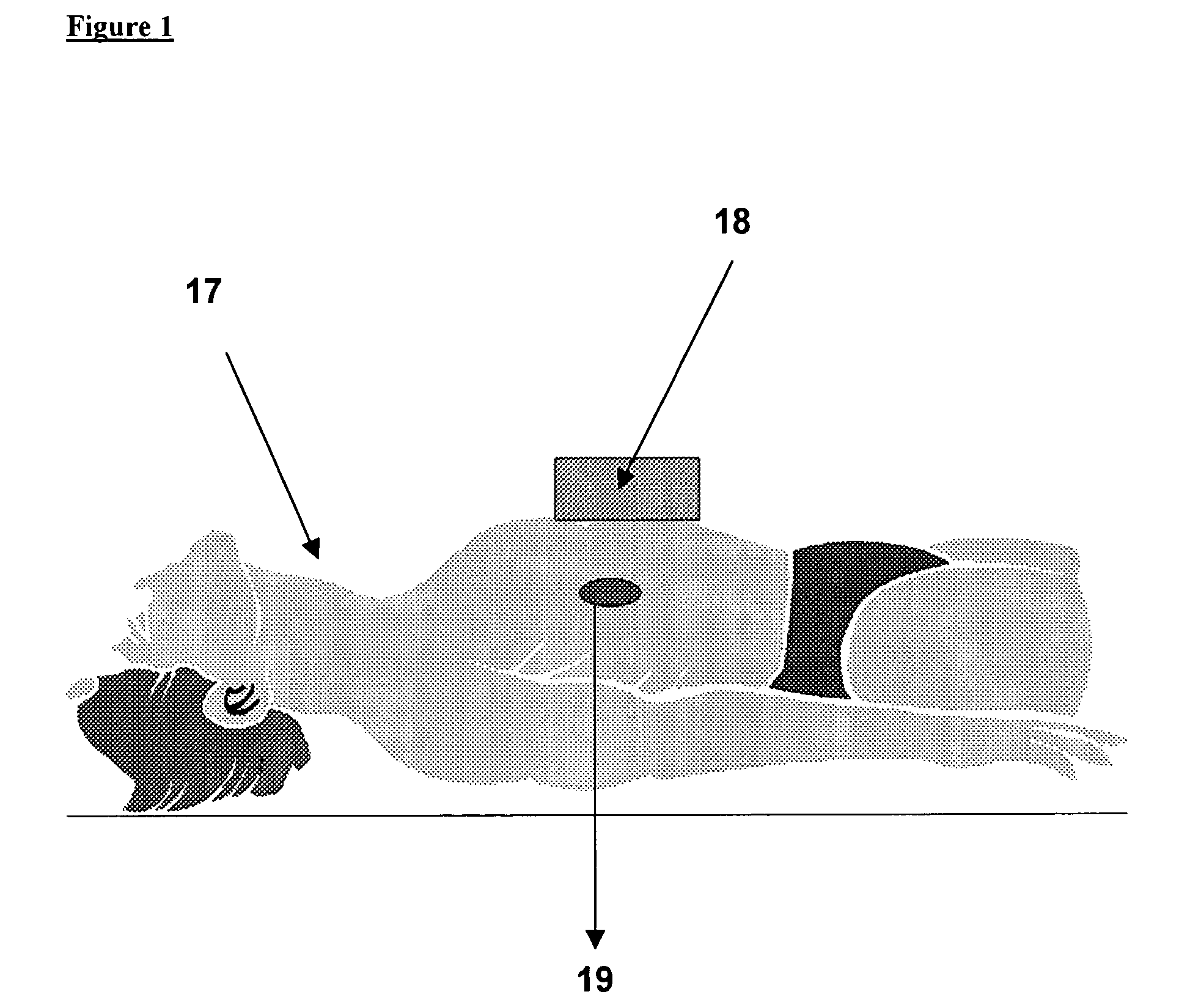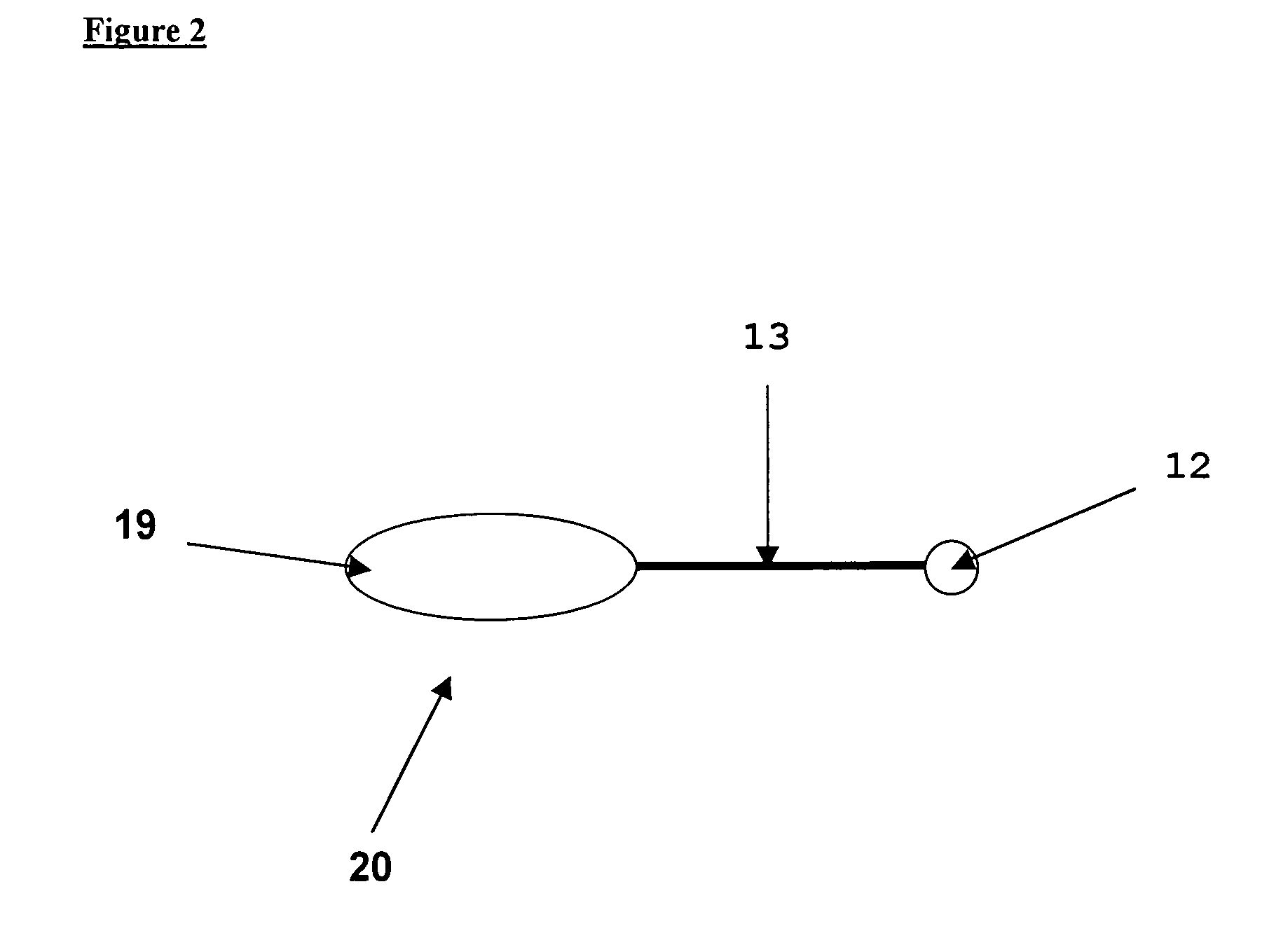Navigating and maneuvering of an in vivo vehicle by extracorporeal devices
a technology of extracorporeal devices and vehicles, applied in the field of extracorporeal devices for mobilizing, rotating and maneuvering of in vivo vehicles, can solve the problems of background art that background art does not teach or suggest an algorithm for estimating the position, and art also does not teach or suggest a system or method, etc., to achieve accurate control of the position of the vehicle, clear observation field, and easy detection
- Summary
- Abstract
- Description
- Claims
- Application Information
AI Technical Summary
Benefits of technology
Problems solved by technology
Method used
Image
Examples
example 1
Gastrointestinal (GI) Use of the Invention
[0105]The present invention is conceived as being a viable alternative to endoscopy, especially in diagnostic or therapeutic procedures in the esophagus, stomach, small intestine, large intestine and rectum. The invention allows the medical personnel to directly observe the epithelial lining of the GI tract and to carry out medical procedures such as tissue sample collection for histological examination, liquid sampling for microscopic examination and culturing and small surgical procedures such as removal of suspicious polyps in the large intestine. These procedures can be carried out with less danger to the patient since no physical connection between the vehicle and the extracorporeal navigating device is necessary. The invention is useful for carrying out the above functions in the diagnosis of or as part of the treatment of malignant, nonmalignant, infectious, and genetic diseases as well as birth or developmental defects.
example 2
Application of the Invention in the Bronchus
[0106]The present invention is conceived as being a viable alternative to bronchoscopy. The invention allows the medical personnel to directly observe the epithelial lining of the bronchi and to carry out medical procedures such as tissue sample collection for histological examination, liquid sampling for microscopic examination and culturing and small surgical procedures. These procedures can be carried out with less discomfort and danger to the patient since no physical connection between the vehicle and the extracorporeal navigating device is necessary. The invention is useful for carrying out the above functions in the diagnosis of or as part of the treatment of malignant, nonmalignant, infectious, and genetic diseases as well as birth or developmental defects.
example 3
Applications of the Invention in the Abdomen
[0107]The present invention is conceived as being an additional tool used in laparoscopy or as a viable alternative to laparoscopy. As mentioned in the previous examples, the vehicle, under the control of the extracorporeal navigating device, can perform small surgical procedures. The invention could therefore be launched from a laparoscopic instrument into the abdomen to perform a certain task or could actually be used in place of the laparoscope in certain indications such as the destruction of kidney stones, gallstones, or other pathological crystalline deposits in other organs. Alternatively, the invention could be used for directly observing organs and tissues in the abdominal space and for carrying out medical procedures such as tissue sample collection for histological examination, liquid sampling for microscopic examination and culturing and surgical procedures, as part of the diagnosis or treatment of malignant, nonmalignant, infe...
PUM
 Login to View More
Login to View More Abstract
Description
Claims
Application Information
 Login to View More
Login to View More - R&D
- Intellectual Property
- Life Sciences
- Materials
- Tech Scout
- Unparalleled Data Quality
- Higher Quality Content
- 60% Fewer Hallucinations
Browse by: Latest US Patents, China's latest patents, Technical Efficacy Thesaurus, Application Domain, Technology Topic, Popular Technical Reports.
© 2025 PatSnap. All rights reserved.Legal|Privacy policy|Modern Slavery Act Transparency Statement|Sitemap|About US| Contact US: help@patsnap.com



